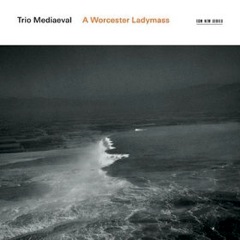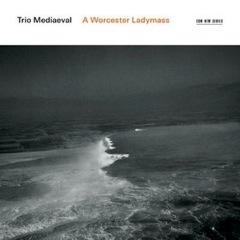
Certain sounds seem to have a visceral impact on those who hear them. A stroke on a gong, or a twitter of piccolo, puts your ears and your mind on alert. So does a whiff of Trio Mediaeval.
The Norwegian ensemble (consisting of Anna Maria Friman, Linn Andrea Fuglseth, and Torunn Østrem Ossum) has a sound you will not forget once you hear it. Keen, focused, and so painfully in tune that your teeth might rattle, it’s nonetheless not harsh or shrill. It is a sound peculiarly suited to very old and very new music, and that’s where the trio (a disc of Norwegian folksongs apart) has situated itself. Its most recent CD consists mostly of medieval English music.
The “Worcester fragments” are a handful of music manuscripts from the 13th and early 14th centuries, preserved likely by happenstance (they were used to mend books, to shore up organ stops, and the like) in a Benedictine abbey in Worcester. Small as it is, this seems to be the single largest trove of 13th-century English music.
Listen To The Music
Munda MariaOut of the Worcester fragments Trio Mediaeval has assembled a Marian votive mass (basically, the ordinary liturgical framework of the Latin Mass, with hymns to the Virgin interspersed throughout). Since the Worcester collection doesn’t include a setting of the Credo, the trio commissioned one from composer Gavin Bryars; that and Bryars’ brief setting of Benedicamus Domino are the only things on this disc that don’t come from the Worcester repertory.
The first thing to be said is that the singing here is just stunning. This is music that pauses every couple of seconds on perfect intervals — usually an octave and a fifth. Those arrivals positively ring, so pure are they. (I had the eerie experience of listening to this disc in a car, and feeling every move from dissonance to consonance in the passenger-side door handle.) Where there are unisons, they are so perfectly blended that it’s only with great difficulty that you can tell that more than one person is singing.
But for all the precision, the effect isn’t cold or remote. There is great tenderness here (and, incidentally, a terrific object lesson for those who think tenderness impossible without vibrato). So beguiling is the sound that even an item like Munda Maria, a litany that (musically speaking) is one short phrase repeated literally a couple dozen times, seems too short.
Bryars’ works are not only beautiful in their own right, but also perfectly suited to this environment. The composer must have steeped himself thoroughly in the Worcester repertory before beginning. There’s the same repeated expansion from and retreat to pure intervals; only here the expansions are longer and more elaborate, the relaxations more tenuous. The Credo is so nearly a perfect thing that it ought to become a repertory staple — though it’s most unlikely that anyone else will be able to sing it like this.

